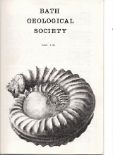The Lowest Desert on Earth

The Jordan-Arava Rift Valley is part of the Great African Rift Valley which stretches from Turkey in the north, through Syria, the Lebanon and Israel, then down into eastern Africa.
The Rift runs for 280 miles through Israel, reaching a depth of 1282 feet below sea level on the shores of the Dead Sea, the lowest place on the surface of the Earth.
During the Pleistocene when northern Europe was in the grips of the great glaciations, the Rift valley in Israel was filled with one large brackish lake which stretched from the northern end of the Sea of Galilee to 20 miles south of the Dead Sea. Named the Lissan Lake, it received vast thicknesses of sediment in the form of layers of marl, gypsum and calcite, called the Lissan Marl. At the close of the last Ice Age, the lake began to shrink, and today 2 residual lakes remain, the Sea of Galilee in the north, 662 feet below sea level, and the Dead Sea in the south. The River Jordan has cut a drainage channel through the Lissan Marls, following the course of the Rift valley for 180 miles from the slopes of Mount Hermon on the northern borders of Israel, through Galilee and then the heart of Israel until it enters the Dead Sea where it has no outlet. The impermeable marls are subject to severe erosion and form the strange lunar like landscapes which typify the desert scenery of Judea and the Negeb, a formidable and barren wilderness. Limestones and chalks rising from the Tiberias to the Cretaceous in the Rift valley limestone hills display karstic features. Springs are common, the result of fissures, transforming an otherwise parched desert into a green oasis. In a series of caves overlooking the Dead Sea at Qumran, were the storage of the Dead Sea scrolls, climatically stable desert climate helping to preserve this unique record of Old Testament scriptures.
The region of Galilee is green and fertile, fed by melting snows from Mount Hermon and the crystal waters of the Jordan River. The freshwater lake of Galilee provides a living for many fishermen as it did in the time of Christ. In contrast, the waters of the Dead Sea are charged with minerals and salts, and it is truly a “dead” sea. No fish live in these waters. Although the Dead Sea is fed by the Jordan River and countless small springs, evaporation in the hot dry climate is phenomenal, faster in fact than input, so that it is gradually shrinking. Its waters are 25 to 30% concentration of various minerals - calcium chloride, magnesium, sodium, bromine and potash, and because of this high concentration of salts, it is impossible to sink in the Dead Sea. Floating is effortless (and as a non-swimmer like myself, a really wonderful experience).
At the southern end of the lake, the Dead Sea Works, located at Sodom, produce potash, a major export. In this area too are found strange pillars of salt, formed by rapid evaporation and erosion.
It is a land of contrasts - the mountain peaks and waterfalls of the north, the gentle hills of central Israel with their olive groves and vineyards, and the barren wilderness of the desert lands.
The geology, the history, the archaeology, and the scriptures are intricately bound together in this strange and beautiful land.
